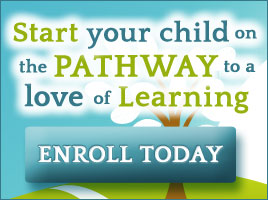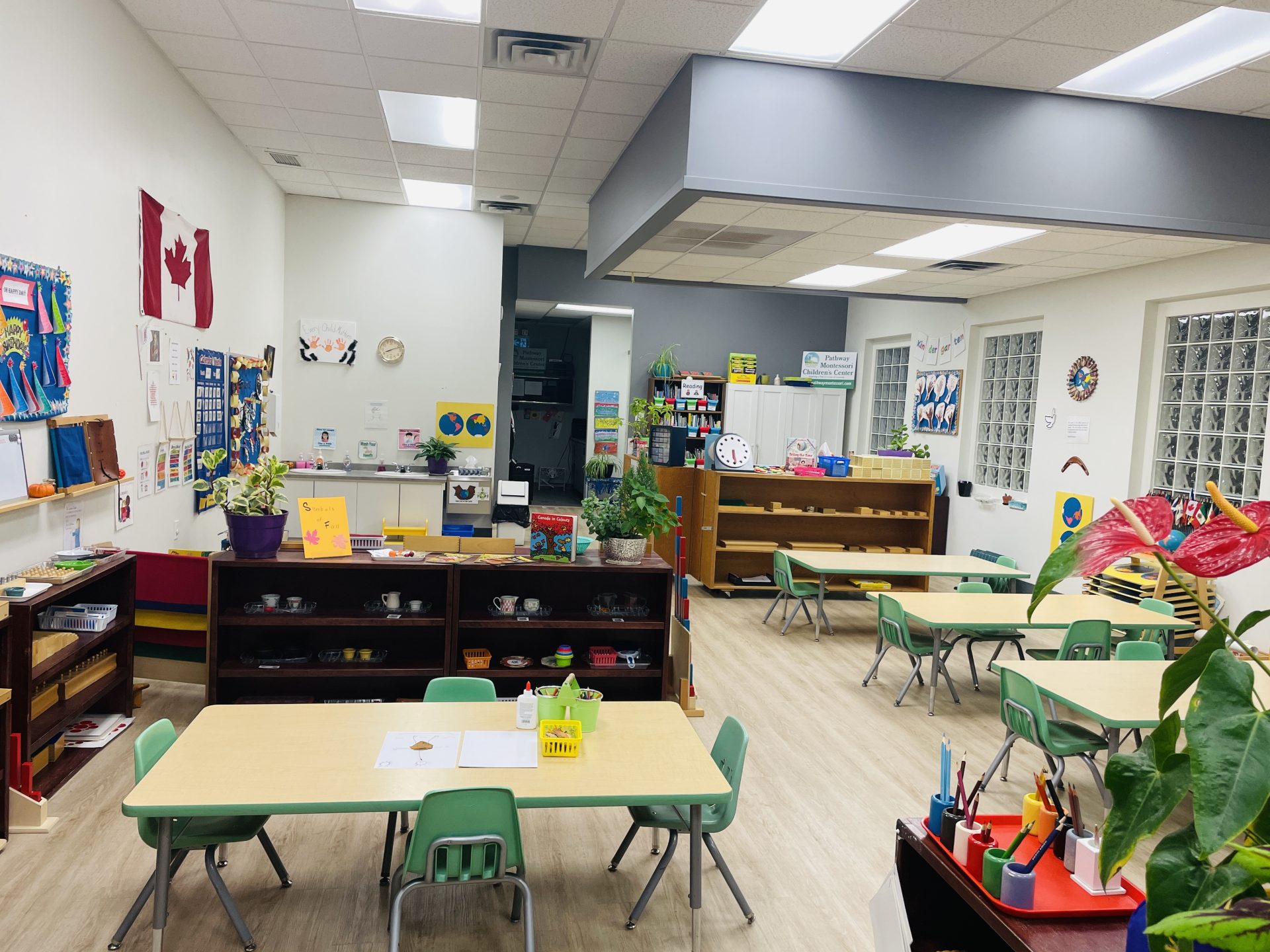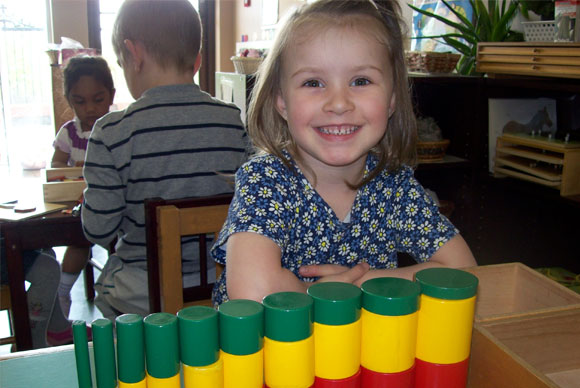by Leslie Christianson-Kellow
for Neighbours Preschool
The first time Shari Couture volunteered in her older son’s class, she couldn’t believe what she saw.
The children were ”working” around the classroom, obviously engaged in their tasks. At a specific time, a group of children stopped what they were doing, tidied up their “work” and readied themselves for snack time.
Couture watched as the children each got their snack, ate in a timely fashion and then proceeded to clean up after themselves, including washing their own utensils. The amazing thing was that it all occurred without the teacher prompting or reminding them.
“When I saw them doing all of that on their own, I was like there’s no way my son is going to be able to do all that. He’s only five years old,” remembers Couture.
Three years later, she now has a child in preschool and a child in Grade 2, both following the Montessori method of learning. And she wouldn’t have it any other way.
Couture says her children are thriving and becoming a self-reliant individuals.
“They’re learning by discovery. Instead of being shovelled information that they might not understand, they discover main concepts and work with those concepts until they understand and grasp them.”
For example, says Couture, “When learning math, it’s very hands on.”
While working with materials like beads, young children might learn about multiplication tables, manipulating and exploring until they truly grasp the basic concept of the numbers.
“My son really gets what 10 times 10 is,” says Couture.
Who was Montessori? Maria Montessori is Italy’s first female doctor.
In the late 1800s she theorized that children displayed key windows of opportunity for learning, especially from birth to six years.
Using observation and guidance, she developed specific teaching methods that helped children become passionate and independent learners.
Nancy Graham, owner of Pathway Montessori preschool and kindergarten, says the program is individualized to help each child reach his or her fullest potential.
This is partly achieved through specific Montessori materials that allow the child to learn through their five senses: touch, smell, taste, sight and sound.
“A Montessori class is a child-sized world,” says Graham. “The areas of the classroom are practical life, sensorial, language, math, geography, science, nature, art and music.”
The materials or exercises in each area are designed to stimulate independent exploration at the child’s own pace. Interestingly, the practical life centre has the child participating in real-life activities rather than pretending with toys. Real-life activities might include pouring (with real liquids), tying their shoes and taking things apart.
Another Montessori principle is children of different ages, usually three to six years of age, work together in the same classroom. This creates a community within the classroom where older children may help the younger ones, or the younger ones might just learn by observing the older children.
While children are also encourages to be independent thinkers, there is still an air of structure within the class.
The teacher’s role is to inspire and mentor the child, says Tammy Simmons, teacher and owner of Hand in Hand Montessori preschool. She says the child needs to discover and experiment on their own in order to gain a full understanding of a concept.
Simmons became interested in the Montessori teaching method while researching preschool options for her own child, then two years old.
She loved the method of fostering the love of learning and creating a live-long foundation that stays with the child.
Simmons was so drawn in that she ultimately studied to become a Montessori teacher herself.
The training is specialized, and parents should always ask about a Montessori teacher’s background, she says.
“It’s usually about a two-year diploma program to become a Montessori teacher,” says Simmons. “Special training is needed, as concepts are taught differently and there are specific materials that are used to teach with.”
She says most teachers would also need early childhood education training.
Ideally, a child will benefit most in a Montessori preschool classroom by being with the same teacher for two to three years, which might include kindergarten, Simmons adds.
“Look for happy children, busy and self-absorbed, working on self-chosen, uninterrupted work,” says Graham. “Teachers should be calm, kind, warm and polite to each child. When determining which school is best for their child, parents have to trust their eyes, ears and gut instincts.”
Click here for the PDF version of Article 2







